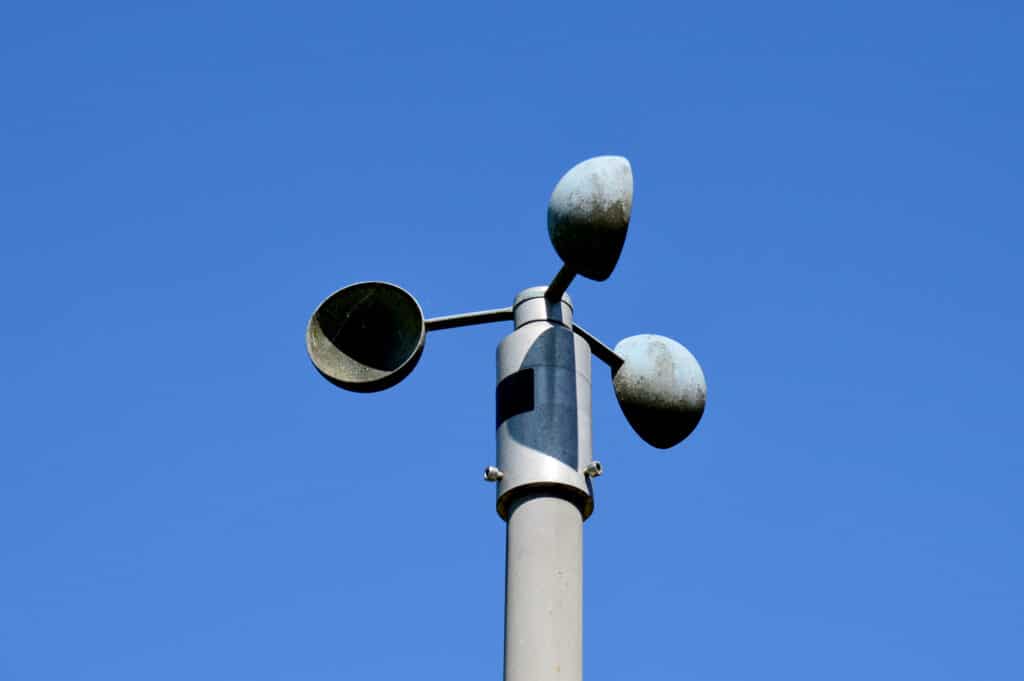Leading Functions to Search For in an Effective Anemometer for Accurate Wind Dimension
Leading Functions to Search For in an Effective Anemometer for Accurate Wind Dimension
Blog Article
Anemometers Introduced: Comprehending Their Importance in Environmental Monitoring and Precaution
The function of anemometers in ecological tracking and precaution is usually ignored, yet their importance is indisputable. These instruments have a lengthy history rooted in clinical query and technological advancements, developing to become vital tools in various areas. From weather forecasting to air travel safety and security, anemometers play a crucial duty in supplying accurate information that educates decision-making procedures and enhances total security. Comprehending the details of anemometers introduces a world of crucial insights that are essential to our understanding of the setting and the actions we require to ensure security.
History of Anemometers
The development of anemometers can be traced back to the old people where rudimentary wind determining tools were very first made use of. These very early wind dimension tools laid the structure for the advancement of extra innovative anemometers in time. Among the earliest well-known anemometers was the hemispherical cup anemometer designed by Leon Battista Alberti in the 15th century. This design contained four hemispherical mugs that gathered wind power, giving a measurement of its intensity based on the rate of turning.
Over the years, innovations in modern technology led to the growth of even more modern anemometers, including ultrasonic anemometers and laser Doppler anemometers, offering increased accuracy and performance in measuring wind speed and instructions. The background of anemometers showcases an impressive trip of advancement and development in the field of meteorology.
Kinds Of Anemometers
Throughout the area of meteorology, different kinds of anemometers have been developed to accurately determine wind rate and direction. Sonic anemometers utilize ultrasonic signals to determine wind rate and direction accurately. Hot-wire anemometers run based on the concept that the cooling result of wind on a heated wire is symmetrical to the wind rate.
Applications in Meteorology
Having gone over the numerous sorts of anemometers utilized in meteorology for determining wind rate and instructions, it is necessary to explore their functional applications in the area. Anemometers play an essential role in meteorology by offering accurate and real-time information on wind problems (anemometer). Meteorologists utilize anemometers to keep an eye on wind rate and instructions to anticipate climate patterns, concern cautions for extreme climate occasions like tornadoes, hurricanes, and storms, and assess atmospheric problems for air travel safety and security
In weather forecasting, anemometers assist in comprehending local and neighborhood wind patterns, which are essential for anticipating weather condition changes and determining weather fads. These gadgets are also made use of in study to examine microclimates, metropolitan warm islands, and air pollution dispersion. Additionally, anemometers are employed in farming to maximize crop management methods, such as watering and pesticide application, based upon wind problems.
Importance in Air Travel Safety
An important facet of making sure air travel safety and security hinges on the precise monitoring of wind problems using anemometers. Anemometers play an see it here important duty in aviation by giving real-time data on wind rate and direction, helping pilots in making educated choices throughout touchdown, flight, and liftoff. Strong and unpredictable winds can substantially impact aircraft procedures, making it important for air travel authorities to count on precise wind dimensions to make certain the safety of travelers and team.

In the vibrant environment of aeronautics, where also minor adjustments in wind speed and direction can have extensive effects, anemometers stand as important tools for advertising secure and protected flight.
Duty in Environmental Research
Exactly how do anemometers add to advancements in environmental research? Anemometers play an important duty in environmental research study by giving essential information on wind speed and instructions. This information is important for recognizing various climatic processes, such as air contamination diffusion, climate patterns, and climate change. By properly measuring wind features, anemometers assist researchers examine the activity of pollutants in the air, analyze the influence of industrial discharges, and forecast the spread of pollutants in the environment.


Final Thought
In final thought, anemometers have actually played a vital function in ecological monitoring and safety procedures. Understanding the importance of anemometers is important for properly determining wind speed and direction, which is crucial for predicting climate patterns, making sure safe air travel operations, and performing environmental researches.
One of the earliest known anemometers was the hemispherical mug anemometer invented by Leon Battista Alberti in the 15th century. Over the years, innovations in modern technology led to the development of even more modern-day anemometers, including ultrasonic anemometers and laser Doppler anemometers, supplying increased precision and performance about his in determining wind rate and instructions. Hot-wire anemometers operate based on the concept that the cooling result of wind on a heated cord is proportional to the wind speed. Meteorologists make use of anemometers to monitor wind speed and direction to forecast climate patterns, issue warnings for serious climate events like tornadoes, typhoons, and storms, and evaluate climatic problems for aeronautics safety.
Understanding the importance of anemometers is crucial for accurately measuring wind speed and direction, which is important for anticipating climate patterns, ensuring safe aviation operations, and conducting environmental studies. (anemometer)
Report this page